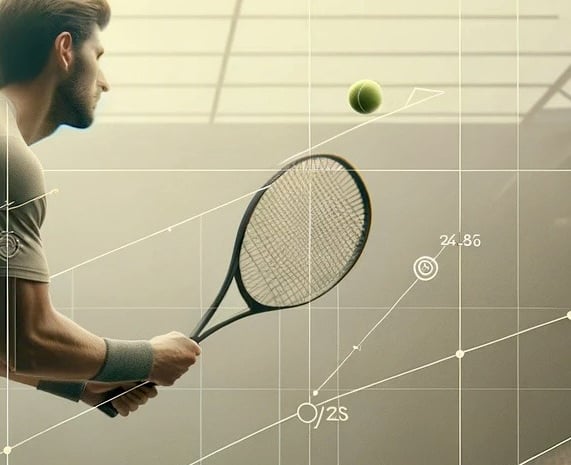How AI is Revolutionising Tennis Training
AI can democratise top-class tennis training through instant, detailed feedback.
1/11/20242 min read


Beyond the Traditional Way of Coaching
Tennis training has evolved dramatically in recent years, with artificial intelligence emerging as a game-changing tool for players of all levels. While traditional coaching remains valuable, AI brings unique capabilities that are transforming how players develop their skills and analyze their game.
The most significant advantage of AI-powered tennis training is its ability to provide instant, objective feedback. Traditional coaches can observe and offer guidance, but AI systems can break down every aspect of a shot with precise measurements and data-driven insights. From racquet angle and ball spin to body positioning and weight transfer, AI captures details that might be imperceptible to the human eye.
Modern AI tennis analysis tools use computer vision and machine learning to track multiple aspects of player performance simultaneously. For example, when analyzing a serve, AI can track the ball toss height, knee bend angle, racquet head speed, and point of contact - all within milliseconds. This comprehensive data helps players understand precisely what they need to adjust to improve their technique.
Another revolutionary aspect is the accessibility of AI coaching. While traditional coaching sessions require scheduling and physical presence, AI tools are available 24/7. Players can record their practice sessions and receive immediate feedback, allowing them to make adjustments in real-time. This continuous feedback loop accelerates the learning process and helps players develop muscle memory more effectively.
AI also excels at pattern recognition across large datasets. By analyzing thousands of shots from professional players, AI systems can identify optimal techniques and common flaws. This allows players to compare their form against proven successful patterns and understand where they deviate from ideal technique.
Personalization is another key advantage. AI systems can adapt their feedback based on a player's skill level, physical characteristics, and playing style. A beginner might receive basic technical guidance, while an advanced player gets detailed insights about subtle adjustments that could improve their game.
Looking ahead, AI in tennis training will likely become even more sophisticated. Integration with wearable technology could provide insights into player movement and biomechanics, while advanced analytics could help predict opponent patterns and develop strategic game plans.
The future of tennis training lies in combining the best of both worlds - the emotional intelligence and experience of human coaches with the precise, data-driven insights of AI. This partnership allows players to benefit from both personal guidance and objective analysis, creating a more complete and effective training experience.
Contacts
humanabilityai@gmail.com
